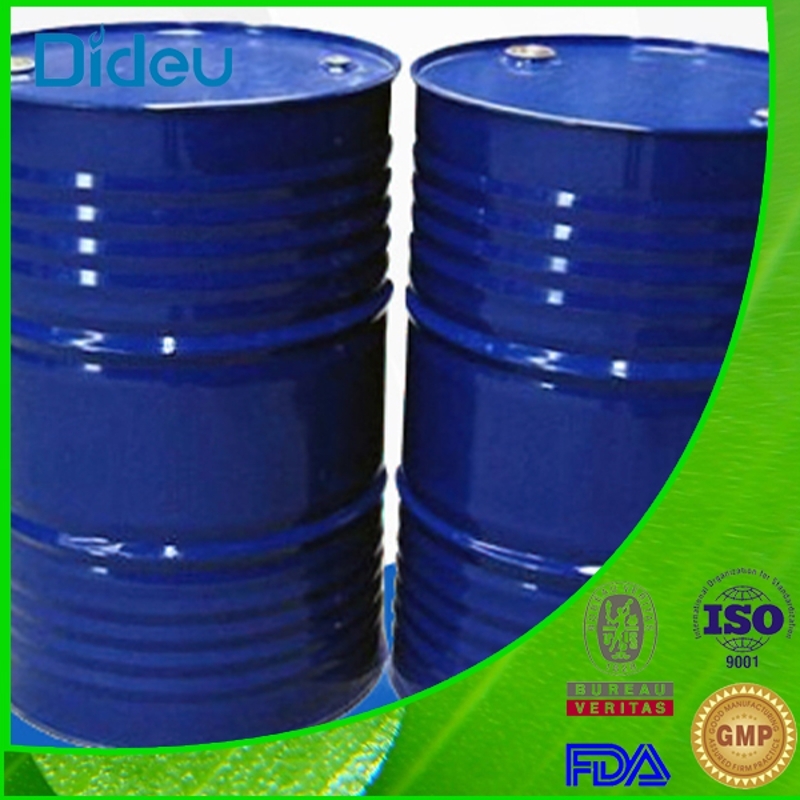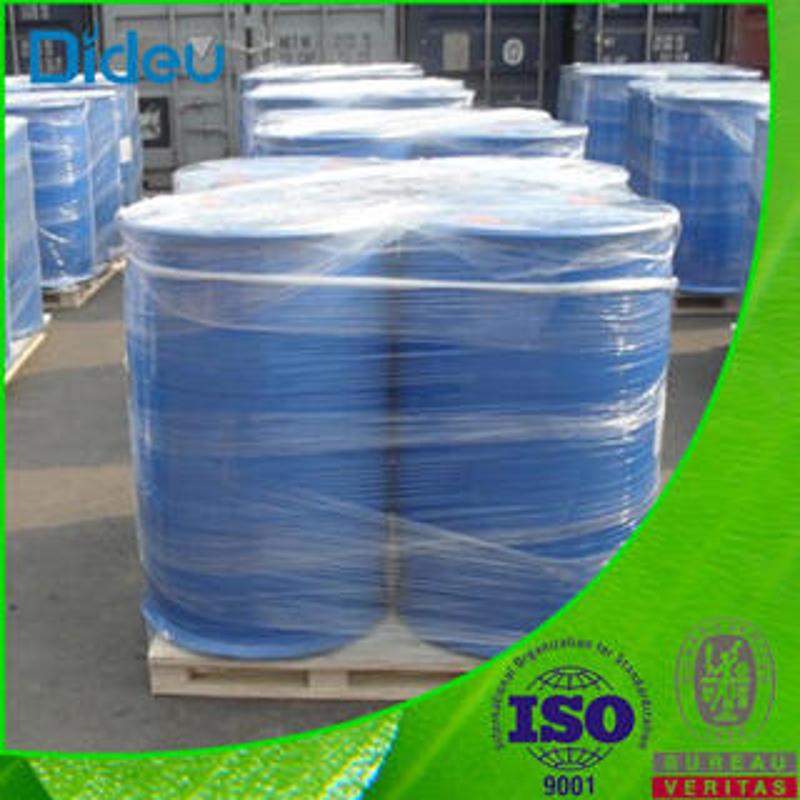-
Categories
-
Pharmaceutical Intermediates
-
Active Pharmaceutical Ingredients
-
Food Additives
- Industrial Coatings
- Agrochemicals
- Dyes and Pigments
- Surfactant
- Flavors and Fragrances
- Chemical Reagents
- Catalyst and Auxiliary
- Natural Products
- Inorganic Chemistry
-
Organic Chemistry
-
Biochemical Engineering
- Analytical Chemistry
-
Cosmetic Ingredient
- Water Treatment Chemical
-
Pharmaceutical Intermediates
Promotion
ECHEMI Mall
Wholesale
Weekly Price
Exhibition
News
-
Trade Service
2 zinc oxide and its modified compound pigment
nano-zinc oxide is called multi-functional material because of its unique physical and chemical properties, and its application as anti-corrosion pigment in anti-corrosion coatings has great potential, but its anti-corrosion properties need to be improved. The nanocomposed pigments formed by doping or surface modification can improve the corrosion resistance of zinc oxide. Here's a look at it from the two aspects of doping and retouching.. Rostami M. El Saeed and others have studied the corrosion resistance of cobalt doped zinc oxide nano pigments. The single nano-zinc oxide pigment and the nano-zinc oxide pigment doped in different proportions were added to epoxy resin to prepare the anti-corrosion coating, and the performance test was carried out, the results showed that the anti-corrosion performance of the nano-zinc oxide pigment with a cobalt doping ratio of 4% was improved by 3 times.Li Qing and others applied overspending polyphenyl sulfur ether/polyethylene/zinc oxide (HPPS/PCL/ZnO) composite anti-corrosion pigments on the surface of the AZ91 magnesium alloy with immersion method, and studied the anti-corrosion properties of HPPS/PCL/ZnO composite pigments by electrochemical methods. Electrochemical impedance and saline immersion tests have shown that the coating surface coated with HPPS/PCL/ZnO complex is still smooth and virtually unchanged after 20 d immersion in simulated seawater, so HPPS/PCL/ZnO complex protects magnesium alloys more effectively. Liu Wei and others studied the anti-corrosion properties of TiO2/ZnO composite pigments and compared TiO2/ZnO with ZnO's corrosion-resistant properties on steel plates, and the results showed that a better cathode protection pair was provided due to the interaction between TiO2/ZnO heterogeneous structures and compound membrane porous structures. Porous TiO2/ZnO composite films have significantly improved corrosion resistance under ultraviolet light exposure. TiO2/ZnO composite pigments are significantly more corrosion resistant than ZnO. Gnanaprakasam Christopher and others made surface-modified ZnO, synthesized oocylic acid-zinc oxide (OA-ZnO) composite pigments, added them to water-based polyurethanes to make nanocomposing coatings, and studied the effects of dispersants on preservative pigments. The results show that modified nanoZnO is more stable than unalmed nano ZnO dispersion. Modified nanoZnO particles are evenly dispersed in a water-based polyurethane coating to prevent corrosive species from migrating to the substrate, thus preventing corrosion. Measurements of polarization curves and AC impedances show that nanoZnO composites containing 0.3% oocylic acid exhibit excellent corrosion resistance. Amir Mostafaei and others studied Polyaniline-ZnO nanorod conductive composites and added them to epoxy resins to test corrosion protection, and the results showed that epoxy coatings containing conductive Polyaniline-ZnO nanocomposive materials had high corrosion resistance and shielding effect.3 Borate is a non-toxic, environment-friendly anti-corrosion pigmentborates are mostly colorless translucent crystals or white powders. The corrosion mechanism of borate is mainly its ability to release boric acid ions in electrolyte solution, form a dense protective film with metal ions and hinder further corrosion of metals.representative products of borate-based anticorrosive pigments are mainly zinc borate. Zinc borate has a unique anti-corrosion properties, can be compatible with a variety of resins, its hydrolysis products can form a uniform, complete passivation oxide film on the metal surface. In addition, zinc borate has a strong anti-corrosion capacity, under suitable conditions, can play a mediating role, thereby disrupting the corrosion-causing environment and loss of adhesion of the anode and cathode region of the establishment. The corrosion resistance of zinc borate coatings is comparable to that of zinc or radon chromate coatings. When zinc borate is used with other anti-corrosion pigments, such as zinc phosphate, modified biborate and hydrated trijustrate aluminum zinc, synergy will occur, which will greatly improve its corrosion resistance.borates in borates can also be used as anticorrosive pigments. Borate was first produced by Buckman in the United States. Unaligned boric acid is susceptible to moisture absorption, lumps, and poor resin compatible. The use of anaeconic hydrated SiO2 will be boric acid coating modified, with the following anti-corrosion characteristics: First, neutral, neutral, can neutralize free acid, when the atmosphere CO2 into the paint film, can prevent the formation of alkali carbonate on the iron surface; The second is micro-solubility, releasing Ba2 plus and BO2- so that the corroded anode reaction is carried out in the opposite direction, blocking the reaction between OH- and Fe2 plus, while Ba2 plus and BO2- reacting with Fe2 plus to produce metal soap, reducing the permeability of the paint film. In addition, the modified biborate has excellent anti-powdering ability, but also make its anti-corrosion effect better.4 Silicate anti-corrosion pigmentsSilicate complex anti-corrosion pigments have very high chemical stability, can form a dense, stable coating on the metal surface, and thus reduce the water, oxygen ions to paint film pass rate, and the product is environmentally friendly and non-toxic, with fast-drying, excellent adhesion and other characteristics, is widely used in ships, drilling platforms, coastal facilities and factory equipment, pipelines, storage tanks, towers, bridges and other steel structures. Silicate belongs to the shielded anti-corrosion pigment because its main component is silicon, through which a dense protective coating is formed. If other chemical elements are added to the silicate structure changes and synergies, corrosion resistance is further improved. Li Sanxi and others discussed the effects of the type and dosage of montessite on the performance, surface appearance and corrosion resistance of zinc-rich coatings, and the results showed that the comprehensive performance of zinc-rich antiseptic coatings with organic montesite as anti-sinking agent was better than that of coatings without anti-sinking agents, while the combined properties of the latter were better than those of inorganic montite as anti-sinking agents. When 0.3% of the total quality of the coating is added organic montesite as a sinking agent, the surface of the coating is flat, dense, and high mechanical strength, excellent corrosion resistance, is a long-lasting green anti-corrosion coating. Qin Fukang in his patent disclosed a water-soluble inorganic ceramic zinc silicate anti-corrosion coating, is made of zinc powder, high-silicone potassium silicate solution and calcium silicate, iron oxide red, mica iron oxide, mica powder, talcum powder, kaolin chrome green, molybric acid, titanium dioxide powder, etc. in one or more components, with excellent corrosion resistance, high temperature resistance, weather resistance and ultraviolet aging resistance.5 niobate system anti-corrosion pigmentniobate pigment is a safe alternative to lead-based and chromate-based anticorrosive pigments, the passivation effect of niobate makes the steel surface to create a passivation layer, this passivation layer forms an excellent adhesion of iron oxide modified coating, but also can produce a mixture of molybdenum and iron oxides, both play a role in corrosion protection. The presence of molybdenum compounds can also enhance the polarization resistance of steel surfaces, while reducing the critical current density required for passivation and enhancing the stability of passivation membranes, especially in the presence of chlorides, it can improve the corrosion resistance of the substrate, anti-corrosion effect can be compared with chromate anti-corrosion pigments, is an ideal new type of anti-corrosion pigment., foreign countries have been used in high-performance anti-corrosion pigments. Sherwin-Williams has successfully developed a range of tantalum pigments, of which moly-White MZAP (Zinc Phosphate Calcium Phosphate), a second-generation modified tantalum pigment, has better corrosion resistance than chromate. L.Veleva and others used zinc phosphate and zinc oxide in epoxy coatings, found that under the conditions of zinc oxide, the anions of niobate and the positive charge on the surface of zinc oxide particles attract each other, preventing zinc oxide from producing zinc hydroxide and inhibiting the decomposition of zinc phosphate, while forming an obstruction layer on the metal surface, improving the corrosion resistance of the system.6 Other types of anti-corrosion pigments 6.1 ferrate anticorrosive pigments ferrate in the composite iron titanium powder is an environment-friendly anti-corrosion pigment, based on Fe3O4 as a carrier, and nano-powder material composite and made. Anti-corrosion of composite iron titanium powder: First, the phosphate root ions in the carrier react with the iron molecules on the steel surface to produce iron phosphate, which can be firmly attached to the steel surface; A passivation film is oxidized on the steel surface to prevent corrosion, and the nano-powder material greatly changes the structure of the coating film, making the coating film flat and dense, effectively hindering the erosion of the steel surface such as H2O, Cl- and O2. Nanocomposed iron titanium powder has a dual anti-corrosion concept of physical and chemical corrosion. In addition, nano-composite iron titanium powder can also improve the fluidity of the coating, and further improve the adhesion, hardness, gloss and other properties of the coating. Wang Fengying to different types of emulsion as a base, the nano-composite iron titanium anti-corrosion pigment WD-A powder and WD-D type powder mixed in a certain proportion, to make cost-effective, excellent comprehensive performance of water-based anti-corrosion coatings.6.2 Mica Iron Oxide Anticorrosive PigmentMica Iron Oxide is a natural iron ore with a mica layer-like structure, which is generally considered to be an excellent raw material for the production of heavy anti-corrosion coatings. Foreign countries, especially in Europe and Japan, the application of mica iron oxide is very common, and its corrosion-proofing system has been studied, the reasons for the excellent anti-corrosion performance of mica iron oxide are: (1) good flaky structure, so that it has a high masking force; Mica iron oxide has good corrosion resistance in the general corrosion environment, but in more demanding environments it needs to be used with other anti-corrosion pigments, such as zinc powder, to meet the anti-corrosion requirements. In view of this situation, two methods can be used to improve the corrosion resistance of mica iron oxide: one is in the mica iron oxide surface bread covered with an organic corrosion inhibitor, can effectively play a corrosion-reprieve, anti-corrosion effect, and the other is the use of inorganic coating method, the surface of mica iron oxide deposited covered with a layer of inorganic material, thereby hindering the erosion of the corrosion medium.Zhou Hongjian and other use of sol-gel method in the mica iron oxide table bread cover nano-silicon dioxide to modify it, the results show that: covered in mica iron oxide surface SiO2 particle size is the same size, particle size of about 40 nm;7 Outlook the performance of anti-corrosion coatings depends not only on the substing resin system, but also on the selection and rational use of anti-corrosion pigments. Foreign patents and literature on this aspect are many, and China's research on anti-corrosion pigment varieties, paint formulation testing is still quite weak, high-performance anti-corrosion pigment research still needs to be strengthened. In terms of improving anti-corrosion performance, the following aspects can be studied: (1) in essence to the traditional anti-corrosion pigment modification, such as the preparation of nano-size anti-corrosion pigments, change its appearance, structure, composition, through doping or surface modification, improve its anti-corrosion performance ;
(3) Can be polyurethane, polyphenylamine, polysorb and other conductive polymer materials and traditional inorganic anti-corrosion pigments to form composite pigments, using the unique properties of polymers to improve the anti-corrosion properties of inorganic pigments ; The low VOC and even zero VOC emissions of water-based anti-corrosion coatings optimize the production environment while also reducing the cost of solvents. Reduce production costs and give water-based corrosion-resistant coatings a competitive advantage. Therefore, water-based anti-corrosion pigments are also an important direction in the field of anti-corrosion coatings. .






